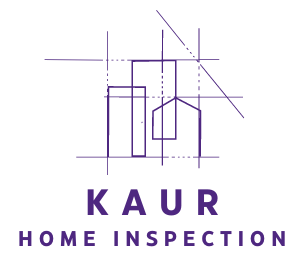Home inspections have evolved significantly over the years, with advanced technology playing a crucial role in enhancing accuracy and efficiency. One of the most impactful innovations in this field is thermal imaging. This technology has transformed the way inspectors identify potential issues that might not be visible to the naked eye. In this article, we’ll explore the importance of thermal imaging in modern home inspections and how it benefits homeowners and buyers alike.
What is Thermal Imaging?
Thermal imaging, also known as infrared (IR) thermography, uses infrared cameras to detect temperature variations on surfaces. These variations can indicate hidden problems within a home, such as moisture intrusion, electrical faults, and insulation deficiencies. Unlike traditional inspections that rely on visual assessments, thermal imaging allows inspectors to uncover issues that might otherwise go unnoticed.
Key Benefits of Thermal Imaging in Home Inspections
1. Detecting Water Leaks and Moisture Intrusion
Moisture issues can lead to severe problems, including mold growth, structural damage, and health risks. Thermal imaging helps detect hidden leaks behind walls, ceilings, and floors by identifying temperature differences caused by moisture. This early detection allows homeowners to address problems before they escalate.
2. Identifying Electrical Hotspots
Electrical issues can be hazardous, posing risks of fires and electrical failures. Thermal imaging detects overheating wires, loose connections, and malfunctioning circuit breakers. By pinpointing these issues, homeowners can take preventive action to avoid costly repairs and potential dangers.
3. Evaluating Insulation and Energy Efficiency
Proper insulation is crucial for maintaining indoor comfort and reducing energy costs. Thermal imaging helps identify areas where insulation is missing or compromised, leading to energy loss. Homeowners can use this information to improve insulation, enhancing energy efficiency and reducing utility bills.
4. Finding HVAC System Inefficiencies
A well-functioning heating, ventilation, and air conditioning (HVAC) system is essential for maintaining a comfortable home environment. Thermal imaging can detect air leaks, ductwork inefficiencies, and uneven heating or cooling, allowing homeowners to optimize their HVAC system for better performance and cost savings.
5. Uncovering Structural Issues
Structural problems, such as foundation cracks and compromised load-bearing walls, can be difficult to detect with the naked eye. Thermal imaging helps inspectors identify these hidden defects by detecting temperature anomalies caused by air movement through cracks or gaps in the structure.
Why Homebuyers and Sellers Should Consider Thermal Imaging?
For homebuyers, a thermal imaging inspection provides peace of mind by uncovering potential hidden issues before making a significant investment. Sellers can also benefit by addressing problems in advance, making their property more attractive to buyers and potentially increasing its value.
Conclusion
Thermal imaging has revolutionized the home inspection industry, offering a deeper level of insight into a property’s condition. By detecting hidden issues early, homeowners can save money on repairs, improve safety, and enhance energy efficiency. Whether you’re buying, selling, or maintaining a home, incorporating thermal imaging into your inspection process is a smart decision.
At Kaur Home Inspection, we use cutting-edge thermal imaging technology to provide comprehensive and accurate assessments. Contact us today to schedule your inspection and ensure your home is in top condition.
Visit www.kaurhomeinspection.com for more information.
